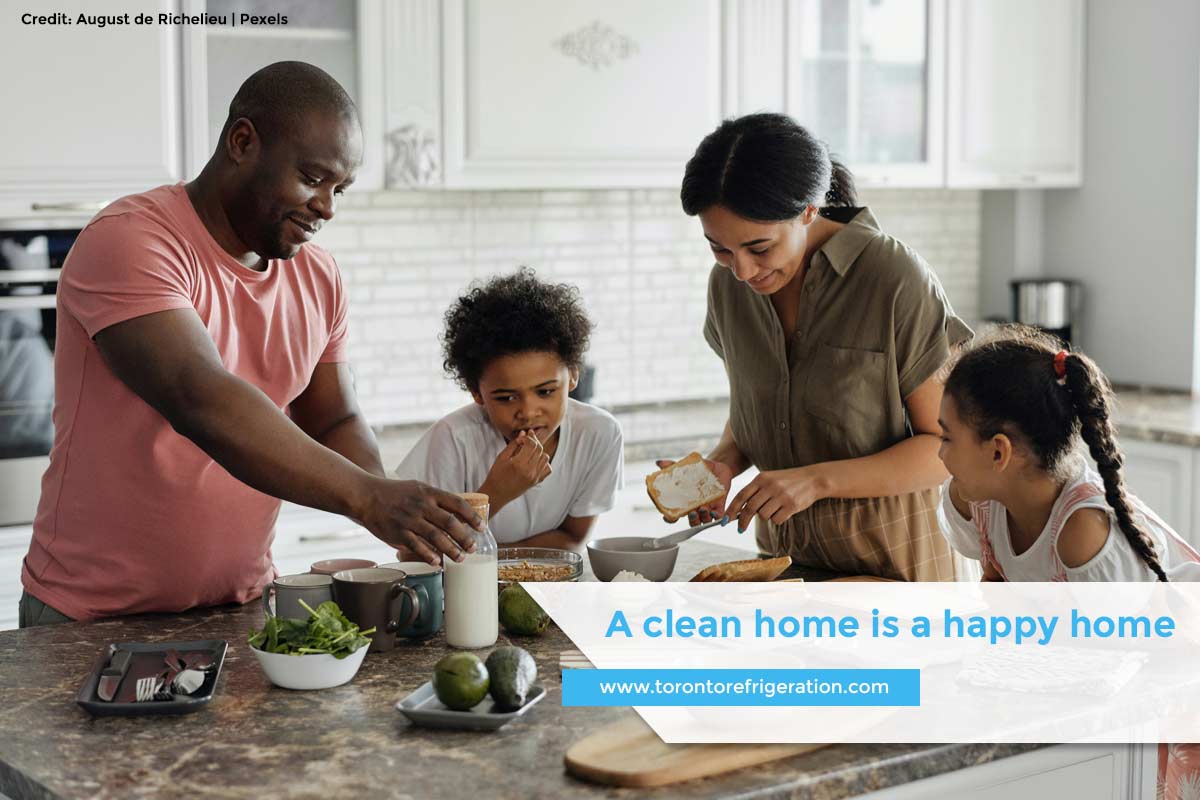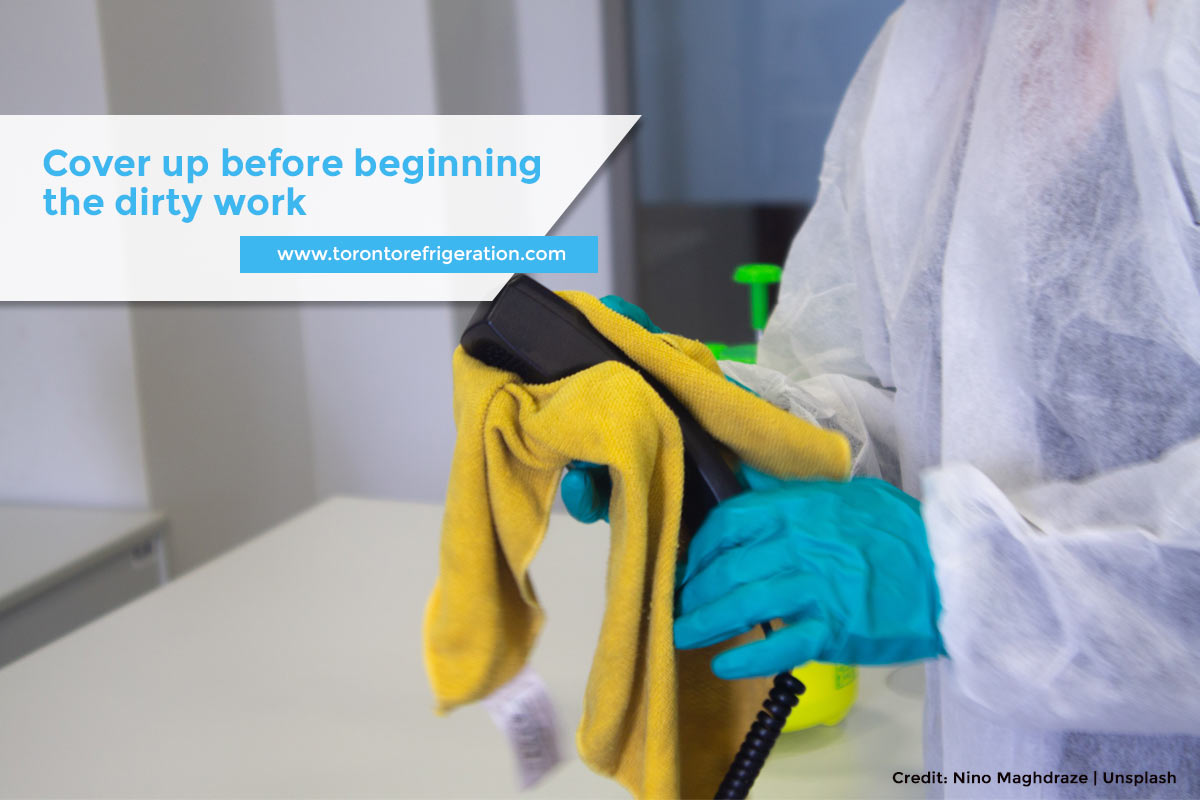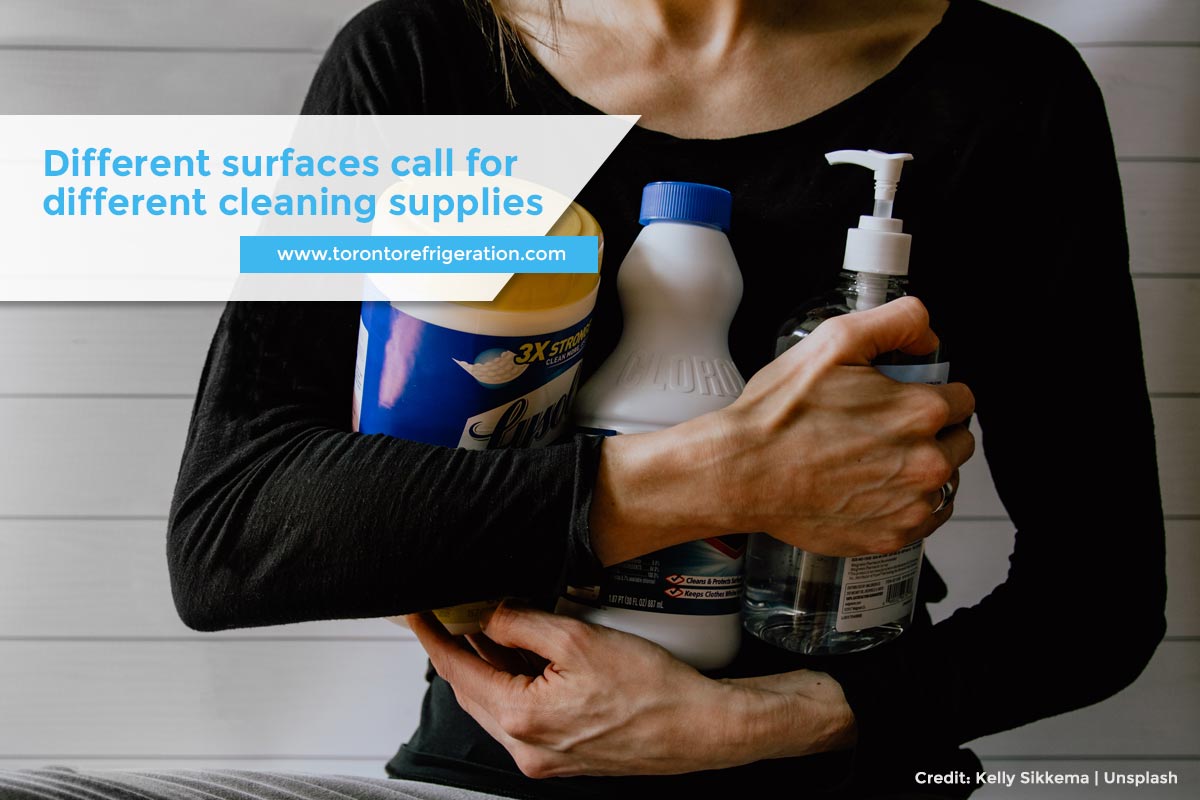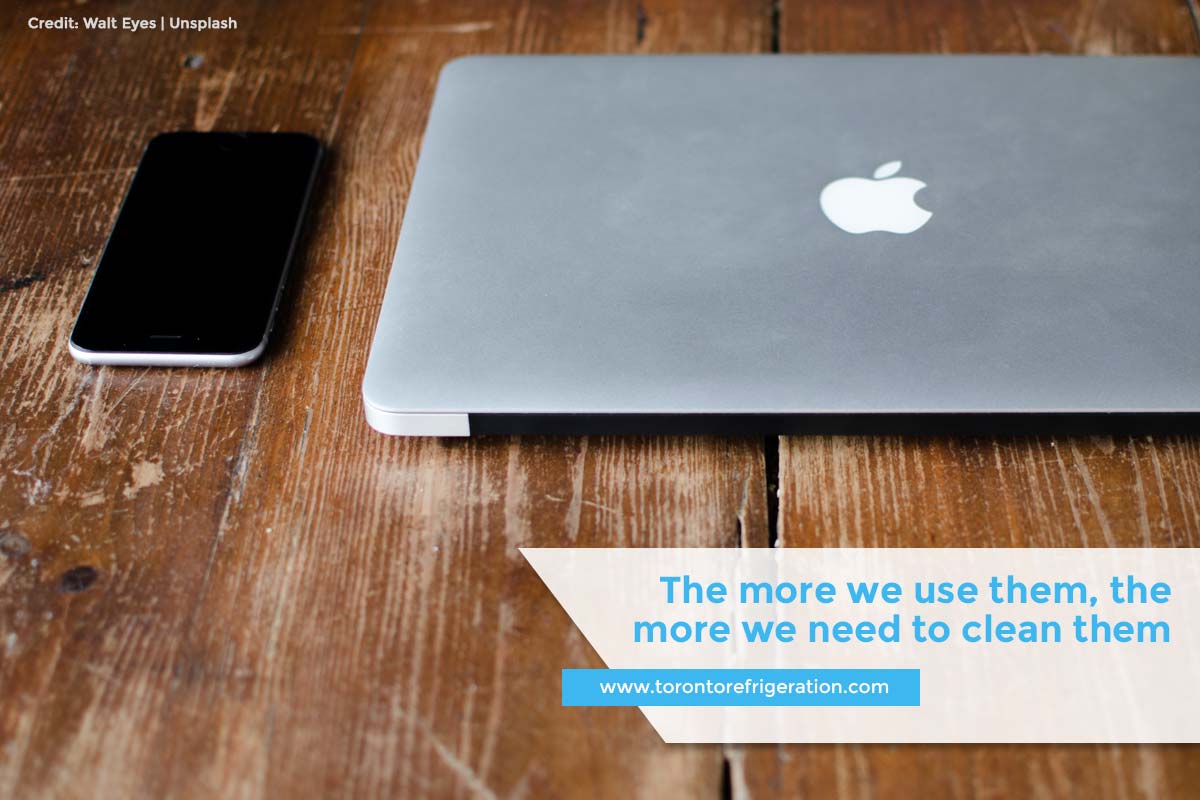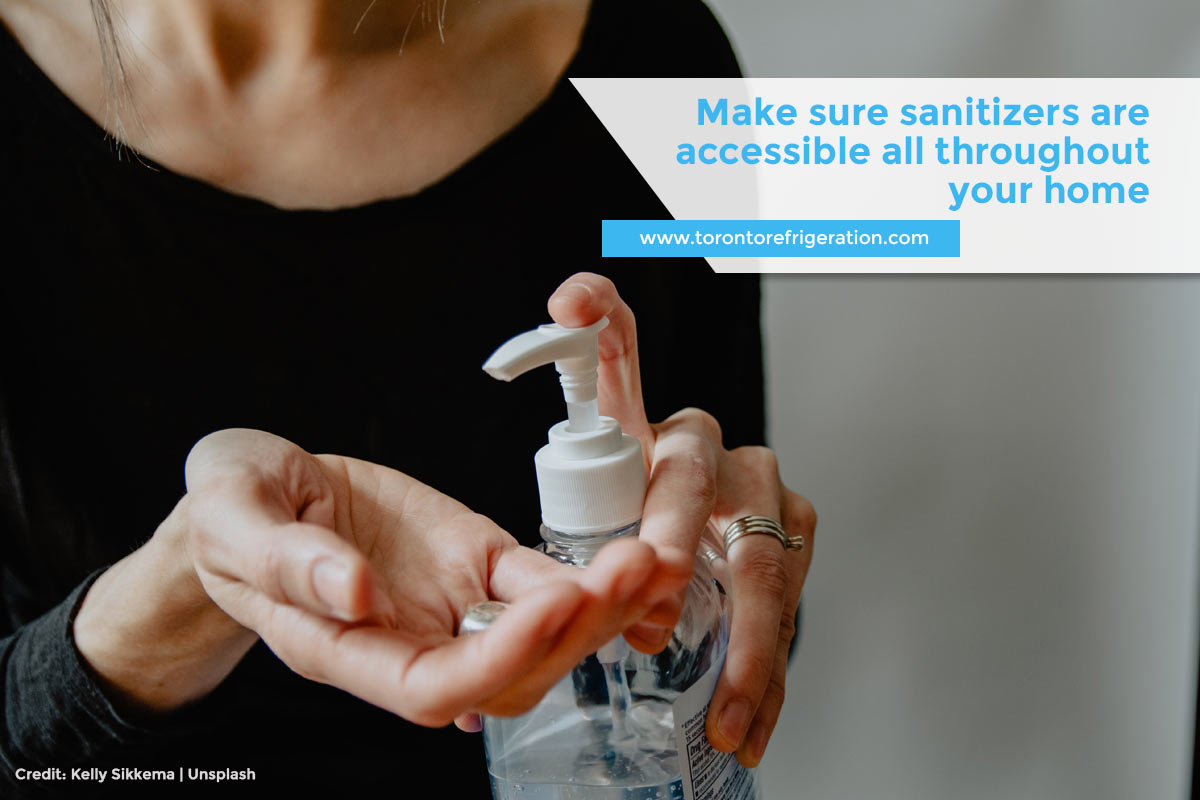Methods for Cleaning and Sanitizing your Household Appliances
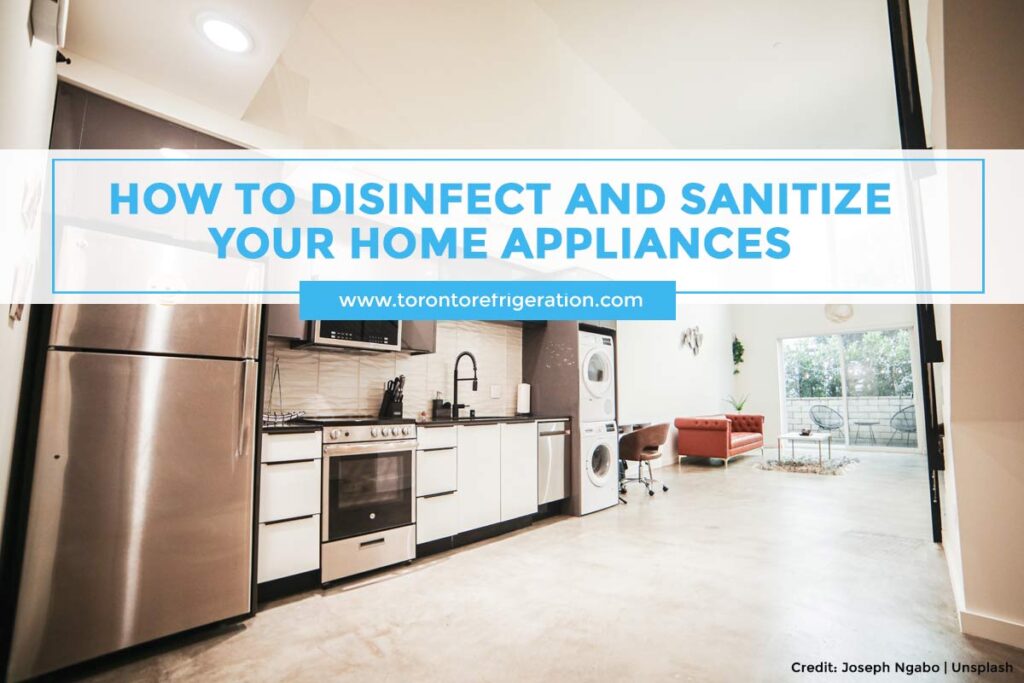
Even when you’re only staying at home, you can still harbour contaminants that could affect your health. Germs lurk on surfaces, and with the ongoing pandemic, any surface of your house is a potential home for undesirable microorganisms or worse, viruses.
If you’re running out on ideas on how to clean your house efficiently, take note of all the high-touch areas. That includes your appliances and electronic devices. Disinfecting your home appliances is a crucial step in protecting your household from the threats of germs and viruses.
What is Disinfection?
Disinfection is the process of eliminating many or all microorganisms. When you learn how to disinfect something, your goal is to kill the germs that may be living in it or on it, using heat, light, chemicals, or other means.
Why Do We Need to Disinfect?
You may enjoy disinfecting and sanitizing your house and home appliances because you want to keep your home spot-free. But the importance of deep cleaning, disinfecting, and sanitizing goes beyond aesthetic value. These steps need to be taken so you can enjoy benefits such as:
Maintaining good health
Your home appliances are among the most regularly used objects at home. Preparing food, cleaning dishes, washing clothes — these exposed items are susceptible to contamination of germs that can bring a variety of diseases. That’s why it is important to know how to clean and disinfect your house properly so you can keep your home and your family healthy and protected from diseases.
More efficient home appliances
Knowing how to disinfect surfaces in your house and all the parts of your home appliances will prevent them from becoming dirty or clogged. That way, your home appliances can continue to function correctly and will work efficiently.
Durable home appliances
Your home appliances deal with a variety of liquids and temperatures. If it is not regularly cleaned and disinfected, there could be a build-up of various materials that can reduce its durability. Corrosion will form rust and will degrade your appliances, thus making them unusable.
When you clean your home appliances and disinfect them on a regular basis, you are keeping them in good shape and extending their lifespan. In the long run, you are saving money just from cleaning and disinfecting.
Before Cleaning Your Appliances
In disinfecting and sanitizing your home appliances, make sure you observe measures to keep both you and your appliances from any damages. Mishandling your appliances is dangerous, so remember to:
- Follow safety precautions for working with home appliances
Your home appliances have specific instructions on how to disinfect. Make sure that you follow safety precautions such as de-energizing the equipment, and wearing protective equipment. You also need to follow the instructions for specific cleaning protocols, if there are any. This is to ensure that your home appliances are cleaned properly. - Use home disinfectant only on specific electrical equipment
Certain electrical equipment must not . If the use of a home disinfectant, or any liquid solution is approved for use, carefully follow the instructions, and use only the specified solution and applicator. Close all the openings of your home appliance before applying the disinfection solution. Wait for the disinfection solution to dry out before re-energizing the equipment. - Be careful when using liquids.
Do not spray any kind of liquids into your home appliance, especially when it is energized (battery-powered or connected to a power source). You also cannot immerse it in liquids unless it is specifically permitted. Most importantly, do not apply any liquid or corrosive solutions to the home appliances unless their use was specifically approved by the manufacturer. This is to ensure that your home appliance will not malfunction.
How to Disinfect Your Home Appliances
The best way to disinfect things is to be methodical. Your home appliances are located in different areas in your house, so it only makes sense to clean them by area. Regardless of which area you decide to do first, save time and energy by cleaning all appliances and equipment within that area one by one before transferring to a different room or floor.
1.Basic Kitchen Cleaning
The kitchen is where you prepare food, so you need to make sure that your home appliances, as well as your utensils, are regularly cleaned, disinfected, and sterilized. Before cleaning the home appliances and utensils found in your kitchen, the area of your kitchen needs to be sterilized and disinfected first.
It is helpful if you learn how to sterilize utensils at home. You can use a kitchen disinfectant, apply home sterilization methods using sterilizing disinfectant to ensure that the area is cleaned thoroughly.
- Refrigerator – You need to clean both the inside and outside of your fridge because it is where you store your food. Because it is almost never moved, the refrigerator is a meeting place for dust and other dirt that falls under or behind it. You can use disinfectant for food-contact surfaces to clean the inside of the refrigerator. It needs to be disinfected to ensure that no germ or bacteria will transfer to your food.
- Oven – If your oven has a self-cleaning option, let the oven do the work for you. However, for surfaces that can’t be reached by the self-cleaning option, you can just wipe them with vinegar or soapy water.
- Stovetop – To clean your stovetop, you can fill your sink with hot, soapy water and soak the burners, knobs, and hood vents. After soaking, scrub each part. For the metal drip plates, steel wool can be used to clean them.
2.Laundry Equipment
Your washing machine needs to clean itself from the inside because bacteria and dirt have surely settled inside the tubes. Before using your washer and dryer, make sure to sanitize and disinfect it. Aside from keeping them clean from dirt and gunk, you’re also making them COVID-ready.
- Disinfecting Your Washer
-
- Make sure that the washer is empty, then set the water temperature for the washer to the hottest setting.
- Add 1 cup of chlorine bleach to the empty washer drum. This is applicable to both front-load and top-load models.
- Set your washer to a full cycle with a hot water rinse, if it is available. Allow your washer to run through the entire cycle.
- After letting your washer run through the entire cycle, inspect its interior and check the rubber seals and gaskets, as well as the door or lid for signs of residue buildup. To get rid of any buildup, simply mix a solution of ¼ cup chlorine bleach and 1 quart of water. Dip your brush in the solution and scrub these areas.
- After scrubbing, set the washer to a rinse or spin cycle, and again allow it to run through the entire cycle so the bleach is fully removed before you do your laundry.
- After cleaning the interior of the washer, clean the exterior of the washer by wiping it down with chlorine bleach and hot water solution. Afterward, rinse it with clean water, and dry it with a soft cloth.
- Sanitizing Your Dryer
-
- Wear your gloves and remove the lint from the dryer screen, and safely dispose of it.
- Mix a cleaning solution of ¼ cup of chlorine bleach and 1 quart of water.
- Dip a cloth or a soft-bristled scrub brush to the cleaning solution and wipe the entire surface of the dryer drum, rubber seals and gaskets, and the interior of the dryer door.
- Rinse the interior drum with a clean cloth dipped in plain water. Afterward, toss in a few old towels or rags, then set the dryer to high. Allow it to run for 10 minutes to remove any residue from the cleaning solution.
- After cleaning the interior of the dryer, clean the exterior of the dryer by wiping it down with your cleaning solution, then rinse well with a cloth dipped in clean water.
Sanitizing Your Electronic Devices
Electronic devices, such as phones, computers, and remote controls, are prone to contamination because we’re always putting them on other surfaces and holding them in our hands. Germs, bacteria, or viruses can easily stick into their surfaces one way or another.
To thoroughly clean your electronics:
- Use a lint-free cloth, such as a screen wipe or a cloth made from microfiber.
- Avoid excessive wiping and submerging items in the cleanser to avoid damage.
- DO NOT use aerosol sprays, bleach, or abrasive cleaners. Don’t forget to unplug all external power sources and cables before sanitizing your electronic devices.
Protection for You and Your Loved Ones
Be sure that you and your loved ones are always protected. Use the best products to disinfect your house. Prepare sanitizer spray for your home. You also need to put hand sanitizers in every room. This way, everyone who enters the space gets to maintain clean hands.
It’s also very important that you learn how to sanitize your room so that you can clean every room in your home thoroughly. Regular sanitization helps ensure that no germs and bacteria are hiding in the corners of your room.
Need to Know If Your Appliances Are Okay?
Toronto Appliance Repair offers maintenance checks for any type of appliance in your home. We make sure you get the service you deserve at the best prices possible. Call us now at 416-918-2700 to book a service call. We are open 24 hours, 7 days a week to serve you round the clock!
